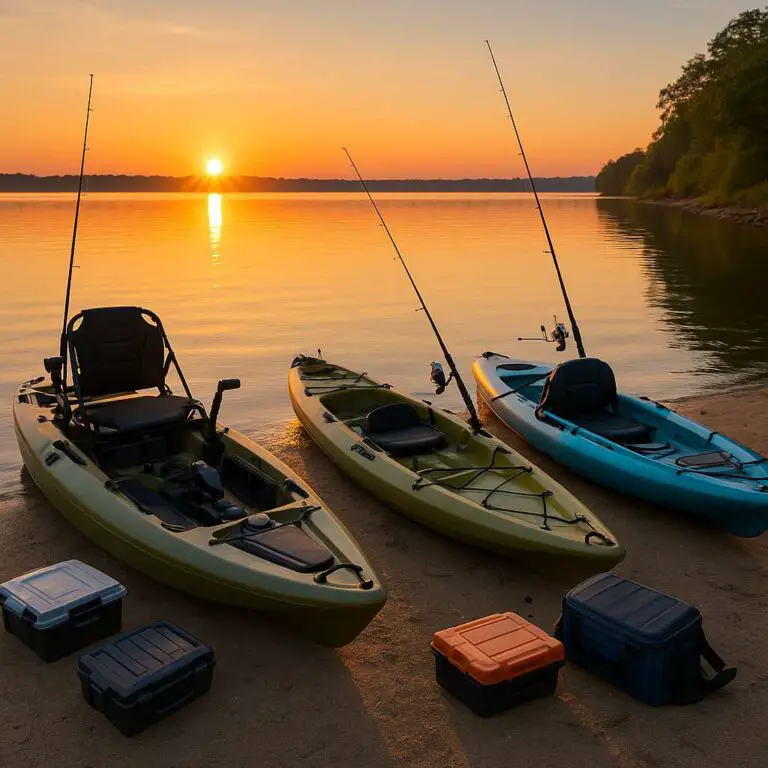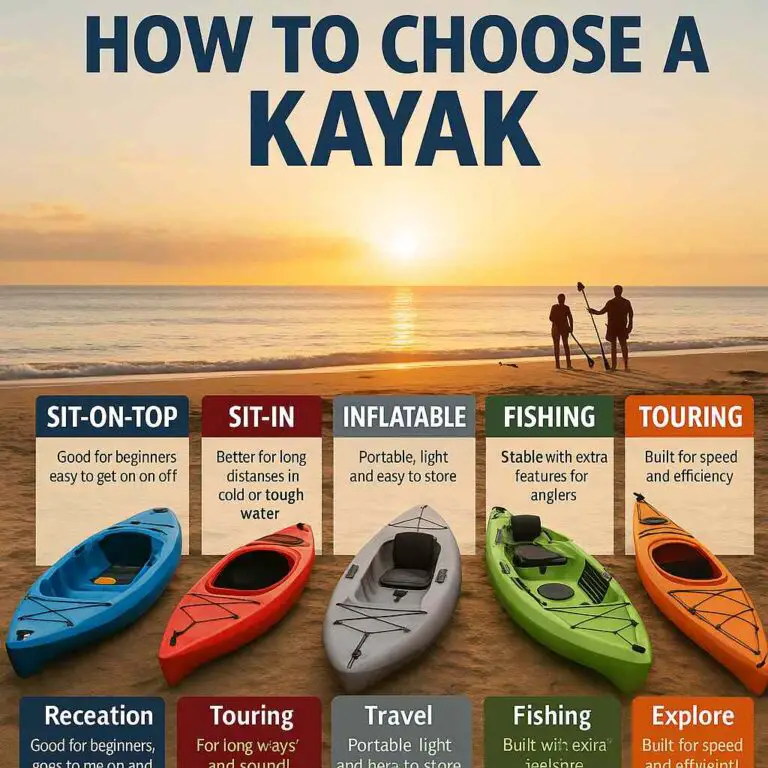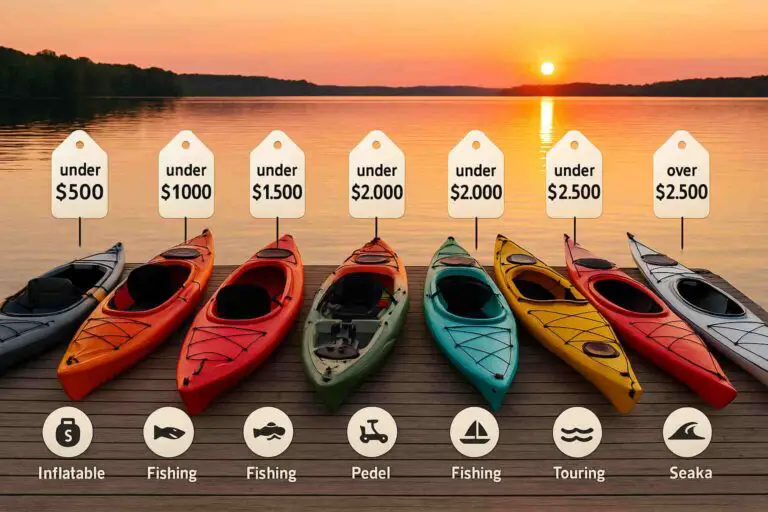Kayaking is a thrilling outdoor activity that allows you to connect with nature while getting some exercise and exploring waterways. Whether you’re a seasoned kayaker or a beginner, safety should always be a top priority. One crucial safety consideration is the use of a life jacket, also known as a personal flotation device (PFD).
You generally need a life jacket on a kayak. Wearing a life jacket, also known as a personal flotation device (PFD), is crucial for safety while kayaking, regardless of your swimming ability or the water conditions.
Most boating accidents occur unexpectedly, and a life jacket significantly increases your chances of survival, especially in rough, cold, or remote waters. Many regions also legally require wearing a PFD while on a kayak. It’s important to choose a properly fitting life jacket designed for paddling activities to ensure safety and comfort.
In this in-depth guide, we’ll explore the importance of wearing a life jacket while kayaking and address common questions and concerns.
The Significance of Safety in Kayaking
Before we delve into the specifics of life jackets, let’s emphasize the significance of safety when kayaking. While it’s true that kayaking offers numerous benefits, such as stress relief and an opportunity to enjoy the great outdoors, it can also pose risks. Water conditions can change rapidly, and even experienced kayakers can find themselves in challenging situations. Therefore, it’s essential to be prepared and take appropriate safety measures.
Key Safety Considerations in Kayaking
- Life Jackets: The focus of this guide, life jackets, are a fundamental safety accessory that can save lives. They provide buoyancy, keeping you afloat in case of capsizing or unexpected immersion.
- Skill and Training: Before embarking on a kayaking adventure, it’s advisable to acquire proper training. Understanding basic paddling techniques, water currents, and rescue procedures can make a significant difference in your safety on the water.
- Weather Awareness: Always check the weather forecast before heading out on the water. Sudden storms or adverse weather conditions can create hazardous situations.
- Float Plan: Inform someone trustworthy about your kayaking plans, including your intended route and expected return time. This ensures that someone will raise the alarm if you don’t return as scheduled.
- Equipment Check: Regularly inspect your kayak and associated gear, such as paddles and safety equipment, to ensure everything is in good working condition.
Now, let’s focus on the central question: Do you need a life jacket on a kayak?
The Importance of Wearing a Life Jacket While Kayaking
Legal Requirements
In many places, wearing a life jacket while kayaking is not just a recommendation but a legal requirement. Laws vary by region, so it’s crucial to research and comply with local regulations. Typically, these laws require that you have a Coast Guard-approved life jacket of the appropriate size for each person on board.
Even if it’s not legally required in your area, wearing a life jacket is a prudent safety measure. Accidents can happen, and having a life jacket can be the difference between life and death in an emergency.
Buoyancy and Flotation
The primary function of a life jacket is to provide buoyancy and keep you afloat in the water. This is particularly important in kayaking because kayaks can capsize, and even skilled paddlers can end up in the water unexpectedly. A life jacket can make all the difference in such situations.
When properly fitted, a life jacket will keep your head above water, allowing you to breathe and stay afloat. This is critical for preventing drowning, especially in swift-moving rivers or open water where fatigue can set in quickly.
Impact of Water Temperature
Water temperature is a crucial factor to consider when discussing the need for a life jacket. Cold water can be extremely dangerous, as it can lead to hypothermia within minutes. Even on a warm day, the water may be much colder than you expect, especially in rivers or lakes fed by mountain runoff.
In cold water, the shock of immersion can cause involuntary gasping and increase the risk of inhaling water. A life jacket not only provides buoyancy but also helps insulate your body, reducing the rate of heat loss and increasing your chances of survival until rescue arrives.
Unpredictable Water Conditions
One of the challenges of kayaking is dealing with unpredictable water conditions. Rivers can have hidden currents, and open water can experience sudden changes in weather. A life jacket ensures that you have a better chance of staying safe in unexpected situations.
If you find yourself caught in a strong current or turbulent water, a life jacket will provide the necessary buoyancy to keep you afloat while you work on stabilizing your kayak or reaching safety.
Personal Factors
Your personal swimming ability and comfort in the water should not be the sole factors influencing your decision to wear a life jacket. Even strong swimmers can struggle in rough water or when faced with cold temperatures and unexpected challenges. Wearing a life jacket is not a sign of weakness but a responsible choice to enhance your safety.
Types of Life Jackets for Kayaking
Now that we’ve established the importance of wearing a life jacket while kayaking, let’s explore the various types of life jackets available for this activity. There are different styles of life jackets designed to cater to kayakers’ specific needs and preferences.
Type I: Offshore Life Jacket
Type I life jackets, often referred to as offshore life jackets, are designed for use in open water where rescue may be delayed. They offer the highest buoyancy and are intended to turn an unconscious person face-up in the water. While they provide excellent flotation, they can be bulky and less comfortable for kayaking.
Type II: Near-Shore Life Jacket
Type II life jackets are suitable for calm, inland waters or where rescue is expected to be quick. They are less buoyant than Type I jackets but more comfortable to wear for extended periods. The type II jackets are a popular choice among kayakers for their balance of buoyancy and comfort.
Type III: Flotation Aid
Type III life jackets, known as flotation aids, are designed for activities such as kayaking. They offer good buoyancy and are more comfortable for extended wear. These jackets are often preferred by kayakers because they allow for greater freedom of movement while providing sufficient flotation.
Type IV: Throwable Devices
Type IV devices, such as throw cushions or ring buoys, are not worn but are kept on board a kayak to be thrown to someone in distress. While they serve a valuable purpose, they should not be considered a substitute for a personal flotation device.
Type V: Special-Use Devices
Type V life jackets are designed for specific activities and typically come with special features. Some Type V jackets are suitable for kayaking and may include additional pockets, ventilation, and comfort features. It’s essential to choose a Type V jacket specifically designed for kayaking if you opt for this category.
When selecting a life jacket for kayaking, consider factors such as comfort, mobility, and the type of water you’ll be paddling in. A comfortable life jacket that allows you to move freely is more likely to be worn consistently, enhancing your safety on the water.
Kayak’s Life Jacket Requirements For All 50 States in The United States?
In the United States, kayak life jacket requirements vary by state but generally mandate a U.S. Coast Guard-approved Type I, II, or III life jacket per person on board. The lifejacket must be in good condition, properly sized, and readily available.
States have specific rules for children, with minimum age requirements for wearing a lifejacket ranging from under 6 to 16 years old. Each state’s regulations have slight variations, so it’s crucial to check the specific rules for the state where you plan to kayak.
How to Choose the Right Life Jacket for Kayaking
Choosing the right life jacket for kayaking is a crucial decision. Here are some factors to consider when making your selection:
1. Buoyancy
The level of buoyancy provided by a life jacket is a critical factor. Kayakers often prefer Type III life jackets, as they offer a good balance between flotation and mobility. However, the appropriate level of buoyancy may vary depending on your body weight and the specific conditions in which you’ll be kayaking.
2. Fit and Comfort
A life jacket should fit snugly without being overly tight. It’s essential to try on several life jackets to find one that suits your body shape and provides a comfortable fit. Check for adjustable straps and consider how the life jacket will feel when you’re paddling for an extended period.
3. Mobility
Kayaking requires a wide range of motion in the arms and upper body. Ensure that your chosen life jacket allows for free movement without restricting your paddling technique. Look for models designed with kayaking in mind.
4. Style
Life jackets come in various styles, from basic designs to more elaborate options with added features like pockets, reflective strips, and high-visibility colors. Consider which features are most important to you and your kayaking needs.
5. Material and Durability
Choose a life jacket made from high-quality materials that are durable and resistant to wear and tear. A good life jacket should withstand exposure to water and sunlight without losing its buoyancy or structural integrity.
6. Certification
Ensure that the life jacket you select is certified by the appropriate regulatory authority, such as the U.S. Coast Guard. Look for the certification label, which indicates that the life jacket meets specific safety standards.
7. Type of Kayaking
Consider the type of kayaking you plan to do. If you’re into recreational kayaking on calm lakes, a basic Type III life jacket may suffice. However, if you’re an experienced whitewater kayaker, you may require a more specialized life jacket designed for challenging conditions.
8. Additional Features
Some life jackets come with added features like zippered pockets for storage, hydration bladder compatibility, and built-in safety whistles. Evaluate whether these extras align with your needs and preferences.
9. Maintenance
Regularly inspect and maintain your life jacket to ensure it remains in good condition. Follow the manufacturer’s guidelines for cleaning and storage to extend its lifespan and effectiveness.
10. Cost
While it’s essential to prioritize safety, consider your budget when selecting a life jacket. There are quality options available at various price points, so you can find one that suits your financial constraints.
Ultimately, the right life jacket for kayaking is one that fits well, offers appropriate buoyancy, and is comfortable to wear for extended periods. Don’t rush the decision, and be sure to try on multiple options to find the perfect fit.
Proper Life Jacket Fit and Adjustment
Once you’ve chosen the right life jacket, it’s crucial to ensure it fits properly and is adjusted correctly. An ill-fitting or improperly adjusted life jacket may not provide the intended level of safety. Here’s how to ensure a proper fit:
1. Check Sizing
Refer to the manufacturer’s sizing chart to determine the correct size for your body weight and chest circumference. Different brands may have slightly different sizing guidelines, so always consult the specific chart for your chosen life jacket.
2. Wear It Snugly
Put on the life jacket and fasten all the zippers, buckles, or straps. It should fit snugly around your torso without being overly tight. Ensure that it doesn’t ride up over your chin or face when properly fastened.
3. Adjust Straps
Adjust the straps or buckles to achieve a secure fit. Pay close attention to the shoulder and side straps, making sure they are snug but not too tight. The life jacket should allow for comfortable movement without chafing or constriction.
4. Test Mobility
Perform some basic arm movements to test the life jacket’s mobility. You should be able to paddle comfortably without any restriction of movement. If the life jacket feels too restrictive, consider adjusting the straps or choosing a different model.
5. Check for Proper Flotation
In the water, your life jacket should keep your head and upper body afloat without effort. Practice floating in a controlled environment to ensure that your life jacket provides the necessary buoyancy.
6. Inspect for Damage
Regularly inspect your life jacket for any signs of damage, wear, or deterioration. Pay attention to seams, straps, and buckles. If you notice any issues, repair or replace the life jacket as needed.
7. Don’t Modify
Avoid modifying your life jacket in any way, as alterations can compromise its safety and buoyancy. Stick to the manufacturer’s recommendations for care and use.
Common Concerns and Myths About Life Jackets in Kayaking
Despite the overwhelming evidence supporting the use of life jackets in kayaking, some concerns and myths persist. Let’s address these common misconceptions:
Myth 1: Strong Swimmers Don’t Need Life Jackets
It’s a dangerous misconception to believe that strong swimmers are exempt from wearing life jackets. Even experienced swimmers can face difficulties in challenging water conditions or due to unexpected situations. A life jacket can be a lifesaver for everyone, regardless of their swimming ability.
Myth 2: Life Jackets Are Uncomfortable
While some people may find life jackets uncomfortable, there are many comfortable and well-designed options available. Modern life jackets, especially Type III models designed for kayaking, prioritize comfort and freedom of movement. Trying on different life jackets and choosing one that fits well can make a significant difference in comfort.
Myth 3: Life Jackets Are Ineffective
Life jackets are rigorously tested and certified to meet specific safety standards. When worn correctly, they can significantly increase your chances of survival in the water. It’s essential to choose a high-quality, certified life jacket and ensure it is adjusted properly to maximize its effectiveness.
Myth 4: Life Jackets Restrict Movement
While it’s true that poorly fitting or improperly adjusted life jackets can restrict movement, modern designs prioritize mobility. Type III life jackets, in particular, are designed to allow for a wide range of motion, making them suitable for kayaking and other water sports.
Myth 5: Life Jackets Are Inconvenient
Some kayakers may perceive life jackets as inconvenient, especially when trying to access gear or move around in the kayak. However, choosing a life jacket with features like zippered pockets for storage can help address these concerns. Safety should always be the top priority.
Myth 6: Life Jackets Are Only Necessary in Whitewater
It’s a common misconception that life jackets are only required for whitewater kayaking. In reality, life jackets are essential for all types of kayaking, including calm lakes and slow-moving rivers. Accidents can happen anywhere, and a life jacket provides added security in case of unexpected emergencies.
Conclusion
In the world of kayaking, safety should always be paramount. Wearing a life jacket is a fundamental safety measure that can save lives and prevent accidents from turning into tragedies. Whether you’re a beginner or an experienced kayaker, the importance of a properly fitted and adjusted life jacket cannot be overstated.
When choosing a life jacket, consider factors such as buoyancy, fit, comfort, and intended use. Select a high-quality, certified life jacket that aligns with your kayaking needs and preferences. Remember that even strong swimmers should wear life jackets, and the comfort and mobility offered by modern designs make them a practical and essential safety accessory.
Ultimately, the decision to wear a life jacket while kayaking is not just a matter of compliance with local regulations; it’s a commitment to your safety and well-being on the water. So, before you embark on your next kayaking adventure, remember to secure your life jacket, ensuring that you’re prepared for any situation that may arise on your journey through the beautiful waterways of our world.
You might be interested in reading this article next: Do Kayaks Flip Easily? Mastering Kayak Stability




